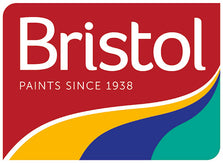
What types of brushes are best for different types of paint (oil-based vs. water-based)?
When it comes to painting, using the right brush can make a significant difference in the quality and ease of application. The type of paint you're using (oil-based or water-based) plays a critical role in your brush selection. Here's a guide to help you choose the right brush for each type of paint:
-
Oil-Based Paints:
- Natural Bristle Brushes: These are made from animal hair, often hog. Natural bristle brushes have split ends (or "flags") that hold more paint and help ensure a smooth application. They are perfect for oil-based paints, varnishes, polyurethane, and other alkyd coatings. However, they can lose their shape and become limp when used with water-based paints.
-
Water-Based Paints (Latex, Acrylic):
-
Synthetic Bristle Brushes: Made from nylon, polyester, or a combination of both, synthetic brushes are ideal for water-based paints. They maintain their shape and stiffness in water, resulting in a smoother finish. There are various types of synthetic brushes:
- Nylon Brushes: Durable and versatile. They are suitable for most water-based paints, but they can become limp in hot and humid conditions.
- Polyester Brushes: Retain their shape and stiffness in all conditions, making them suitable for latex paints.
- Nylon/Polyester Blend: Combines the best traits of both materials, offering versatility, durability, and a smooth finish.
-
Synthetic Bristle Brushes: Made from nylon, polyester, or a combination of both, synthetic brushes are ideal for water-based paints. They maintain their shape and stiffness in water, resulting in a smoother finish. There are various types of synthetic brushes:
-
General Recommendations:
- Quality: Invest in a good-quality brush. High-quality brushes will have densely packed bristles, a solid ferrule, and a comfortable handle. They'll hold more paint, apply it more smoothly, and last longer if properly cared for.
-
Size & Shape: The size and shape of your brush should match your project:
- Thin Angle Sash: For trim, corners, and cutting in.
- Square Trim Brush: For flat surfaces.
- Wall Brush: For larger surfaces like walls.
- Brush Stiffness: Brushes come in various stiffness levels. For thicker coatings like exterior latex paint, use a stiffer brush. For thinner coatings and more detailed work, a softer brush can be more appropriate.
- Maintenance: No matter the brush type, always clean it thoroughly after use. Proper cleaning and storage will extend the life of the brush and ensure consistent, high-quality results on future projects.
In conclusion, when selecting a brush, prioritize the type of paint you'll be using. Natural bristle brushes are best for oil-based paints, while synthetic bristle brushes are ideal for water-based paints. Always invest in quality tools and take care of them to achieve the best painting results.
